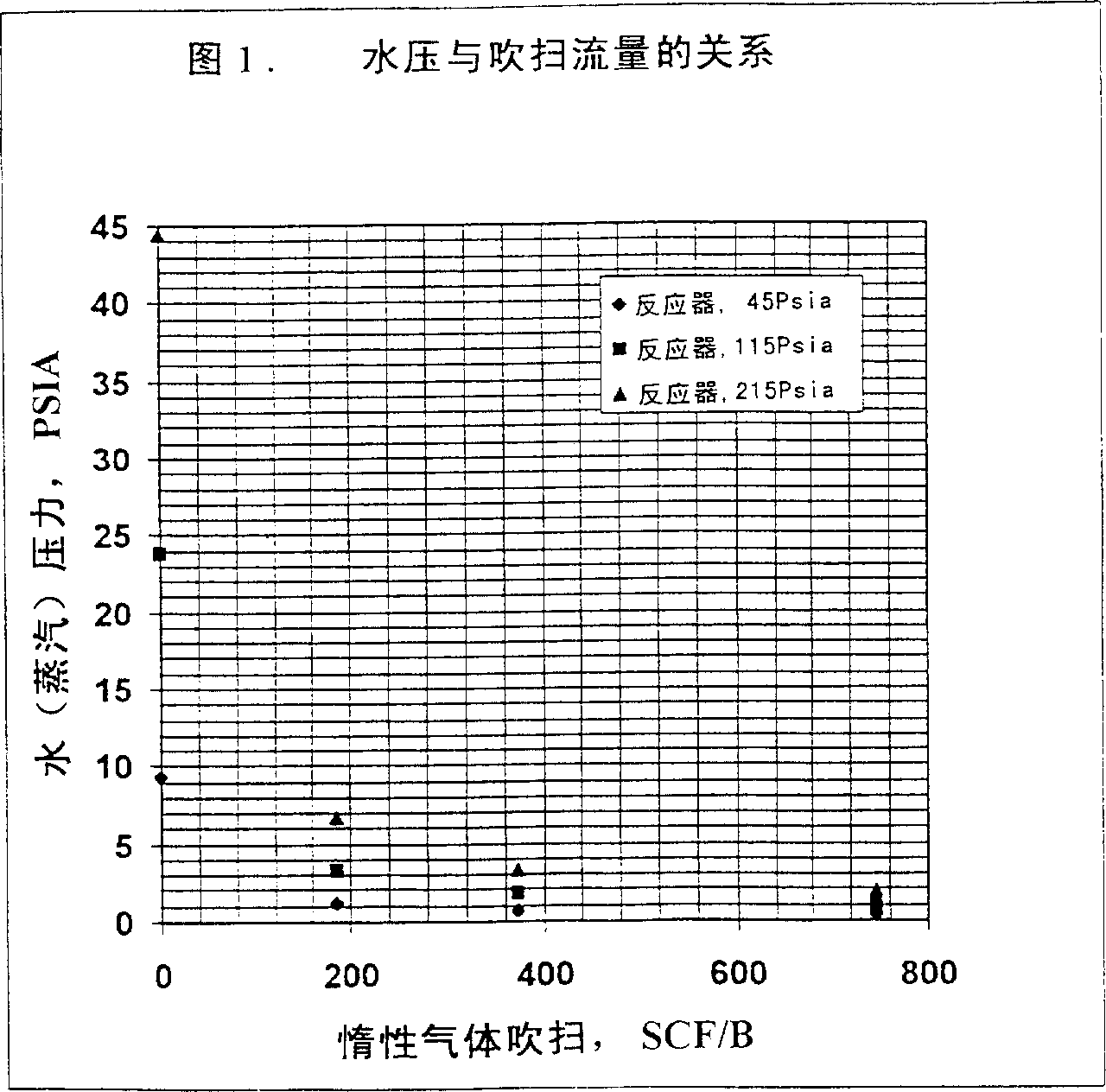Process for reducing total acid number of crude oil
A technology of petroleum and carboxylic acid, applied in the direction of refining with metal salts, etc., can solve the problem of not mentioning catalyst particle size, catalyst concentration, etc.
- Summary
- Abstract
- Description
- Claims
- Application Information
AI Technical Summary
Problems solved by technology
Method used
Image
Examples
Embodiment 2
[0037] Example 1 was repeated except that 100 g of the Kome / Bolobo mixture and 0.62 g of MOLYVAN were added to the reactor - L (the amount added is sufficient to have 500 wppm Mo in the reactor feed). This compound is provided by R.T. Vanderbilt Company and is molybdenum di(2-ethylhexyl)dithiophosphate containing 8.1% Mo. Example 3:
Embodiment 3
[0038] Example 2 was repeated except that the reaction product was filtered to remove catalyst solids before evaluating the liquid. Example 4:
Embodiment 4
[0039] Table 2
[0040] The examples in Table 2 show that under relatively mild heating conditions, when no hydrogen is added, a trace amount of molybdenum can be added to accelerate the decomposition rate of TAN, wherein molybdenum is added in the form of an oil-soluble molybdenum compound (refer to Example 2 and 3 are compared with Example 1). Additionally, it can be seen that water has an inhibitory effect on TAN conversion (compare Examples 2 and 3 with Example 4).
PUM
| Property | Measurement | Unit |
|---|---|---|
| particle size | aaaaa | aaaaa |
Abstract
Description
Claims
Application Information
 Login to View More
Login to View More - R&D
- Intellectual Property
- Life Sciences
- Materials
- Tech Scout
- Unparalleled Data Quality
- Higher Quality Content
- 60% Fewer Hallucinations
Browse by: Latest US Patents, China's latest patents, Technical Efficacy Thesaurus, Application Domain, Technology Topic, Popular Technical Reports.
© 2025 PatSnap. All rights reserved.Legal|Privacy policy|Modern Slavery Act Transparency Statement|Sitemap|About US| Contact US: help@patsnap.com

